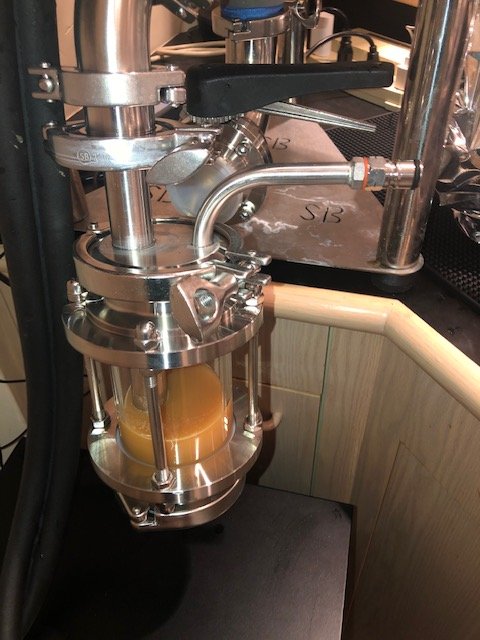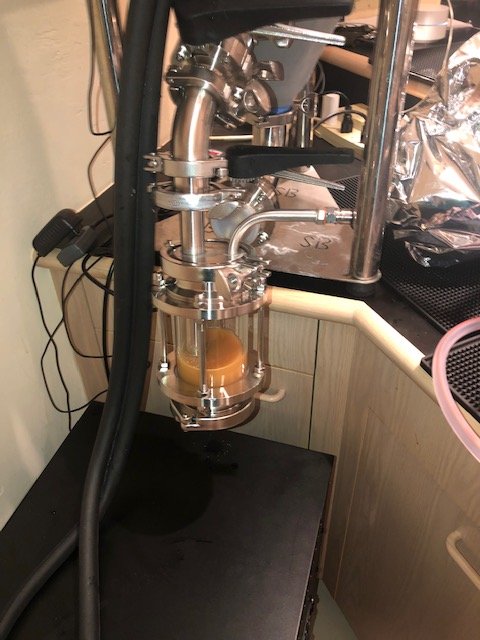I do not own the yeast brink nor do I own a conical - HOWEVER I do own a Jaybird modded Speidel fermentor and the yeast harvester this yeast brink is based off of. I asked a question earlier in the thread about using these to mimic the yeast brink advertised here (dry hopping specifically)- it worked! Here is a couple of pics of the setup.
I did some test batches first - 9-10oz is MAX amount hop pellets in the HALF GALLON jar. Any more and it is just sludge that will not move.
Adding beer to dryhop. Before doing this, I purged the jar with nitro and CO2, let it set for a few minutes - then purged again then tightened the TC clamp. This jar had 7.5oz hops and took about 40secs to push it all back into fermentor. When the flow slowed it was because the sludge started compacted the barb, I would just shake it a little and it would flow back in.
View attachment 607408
Now I can LODO dry hop my hazy IPAs then cold crash in my psuedo unitank and only transfer “clear” beer into kegs. Thanks
@Jaybird !!!










![Craft A Brew - Safale BE-256 Yeast - Fermentis - Belgian Ale Dry Yeast - For Belgian & Strong Ales - Ingredients for Home Brewing - Beer Making Supplies - [3 Pack]](https://m.media-amazon.com/images/I/51bcKEwQmWL._SL500_.jpg)



















































